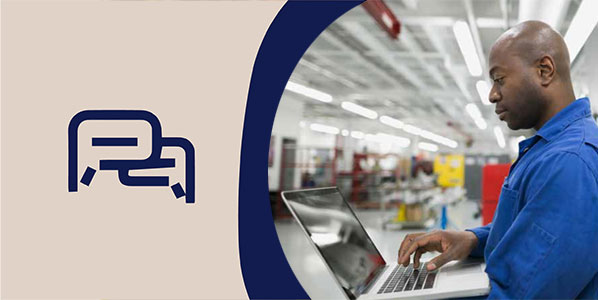Securing top talent is critical to both growth and innovation. But recruitment is no walk in the park. Indeed, a survey by the British Chambers of Commerce (BCC) revealed that 66% of UK companies reported recruitment difficulties in the first quarter of 20241.
Fortunately, recruitment management systems (RMS) can help. From applicant tracking (ATS) to candidate relationship management (CRM) and beyond, these tools help businesses make their hiring process more efficient and effective.
Let’s find out why these systems are now considered a core part of modern human resources (HR) practices and how you can use an RMS to stay ahead of your competition in the race for top talent.
What is a recruitment management system?
A recruitment management system (RMS) helps you better manage your recruitment efforts, including posting job ads, organising applications, scheduling interviews, and even onboarding, by centralising both your recruitment data and activities onto one platform.
Put simply, recruitment management systems have a range of features, including automation and analytics, to help you improve both your hiring processes and the candidate experience over the entire recruitment lifecycle – from job opening to final acceptance.
Key features of recruitment management systems
An RMS can not only help you accelerate your recruitment process but also improve hiring quality. It all comes down to a few core features. Let’s take a closer look.
Applicant tracking system (ATS)
As you might expect, an ATS allows you to track candidates throughout the recruitment process – from first contact to onboarding. But they also allow you to manage job postings and applications as well as collect, screen and process CVs in a single platform.
What’s more, you can also use this feature to track key performance indicators (KPIs), including time-to-hire and offer acceptance rates. These analytics help you gauge how well your recruitment strategies are performing so you can make data-driven decisions.
Candidate relationship management (CRM)
CRM is all about keeping candidates engaged and speeding up the recruitment process. For example, email templates and automated messages help you keep in touch with both current and potential candidates so you can build lasting connections.
Aside from engagement, CRM also helps you build a talent pool that you can tap into whenever new positions open up. For example, you can match candidate profiles to new roles and even filter to find suitable candidates based on specific criteria like skills, experience or location.
Job posting and distribution
A recruitment management system allows you to post jobs to multiple job sites, career pages and social media platforms from a single interface. This saves time, increases reach and ensures consistency. You can even target specific networks that are more likely to attract the right candidates.
Your teams can also update and remove job listings across all platforms within one system. Plus, it’s easy to track metrics across different channels, including views, clicks and application rates. This means you can see how your job posts are performing and adjust if necessary.
Interview scheduling
Automated interview scheduling is one of the more advanced tools in a recruitment management system. This makes it easy for your teams to organise interviews without all the back-and-forth emails, saving time and reducing workload.
Moreover, it also gives candidates the freedom to select an interview slot that suits their needs and availability. Not only does this improve the candidate experience but it also helps reduce dropout rates.
Reporting and analytics
A recruitment management system makes it easy to collect and analyse your data for insights into how different recruitment channels and strategies are performing. This helps you narrow down where to advertise posts and fine-tune your strategy.
Plus, detailed analytics help you make data-driven decisions based on recruitment data, including time-to-hire and interview metrics. You can also track recruitment metrics using real-time dashboards and tailored reports to cover all your informational needs.
Benefits of using a recruitment management system
Recruitment management systems are designed to help businesses recruit better and faster. But that’s not all because they offer a range of great benefits. Here are four of the best.
Boost efficiency
An RMS reduces manual work and speeds up the recruitment cycle by automating tasks like posting jobs, reviewing CVs and tracking candidates. This helps improve your workflows but even more importantly also improves your time-to-hire. What’s more, it frees HR staff to focus on more high-value tasks, including personalising the candidate experience.
Enhance the candidate experience
An RMS can improve your candidate journey. For example, email templates and automated messages make it easier for your teams to provide timely updates and feedback, ensuring candidates feel valued. This positive experience improves both engagement and satisfaction, which ultimately translates to more top candidates accepting job offers.
Cut costs
Automating routine recruitment tasks helps speed up the hiring process and bring down costs, for example, by reducing headcount or lowering ad spend. In short, an RMS improves your cost-per-hire. What’s more, it can also help reduce staff turnover by making sure you hire the right people the first time around, which can significantly cut recruitment costs over the long term.
Leverage insights
Analytics and reporting tools provide insights into KPIs like time-to-hire and source of hire. These insights allow you to make data-driven decisions to fine-tune your recruitment strategies and improve the quality of your hires.
Types of recruitment management systems
RMS come in all shapes and sizes, so it’s important to understand the differences. Here are the pros and cons of the four main types of recruitment management systems:
Cloud-based solutions
As the name suggests, cloud-based recruitment management systems are hosted online – in the cloud.
|
Pros: |
Cons: |
|
|
|
Perfect for: companies that don’t want the hassle of managing hardware and software infrastructure.
|
|
On-premises software
On-premises recruitment management software is installed and operated on your company’s own servers.
|
Pros: |
Cons: |
|
|
|
Perfect for: companies that have specific security requirements or need lots of custom features. |
|
Open-source platforms
Open-source recruitment management systems are publicly available and can be modified to suit specific needs.
|
Pros: |
Cons: |
|
|
|
Perfect for: companies that have well-established IT departments and need tailored solutions.
|
|
Integrated HR suites
Integrated HR suites combine recruitment management with other HR functions, such as payroll, time and attendance tracking and employee engagement.
|
Pros: |
Cons: |
|
|
|
Perfect for: companies looking for a unified approach to HR management and consistency across all HR activities. |
|
How to choose the right recruitment management system
With so many options and features, it’s easy to get distracted when choosing a recruitment management system. But don’t worry. Here are six steps to help you choose the right solution for your business:
- Identify your needs
It sounds obvious, but it’s often overlooked. Start by working out exactly what your business needs. This means looking at your existing processes and identifying any weak points. We recommend asking staff and collating feedback on your current recruitment processes and workflows. - Decide on features
Many solutions have far more features than most companies use. That’s why it’s a good idea to focus on the features that matter to you, i.e. those that will help your hiring managers the most. We recommend asking your HR teams what features would be most helpful. After all, they’re the ones who will be using them. - Set your budget
Next, draw up a clear budget that considers both initial costs and ongoing expenses, including subscription costs. This will help filter out any options that don’t align with your financial resources. Ultimately, there’s no point considering a solution that your business can’t afford. - Consider scalability
The right solution should grow with your business. After all, changing system six months down the line isn’t cost-effective. That’s why it’s important to choose a system that can scale with your company. We recommend checking whether it can handle increasing data volumes and new tasks. - Read reviews
Check reviews and comparisons to better understand user experiences and identify potential issues. This will ultimately help you make an informed decision based on real-world feedback. We recommend making sure the interface is intuitive and easy to use. You don’t want to slow your teams down with a complex solution that’s hard to navigate. - Check integration capabilities
Most companies use different systems for different areas. So, it’s a good idea to make sure that a system integrates easily with any other tools your company uses. This reduces the need for manual data entry, which in turn minimises errors. We recommend checking that your chosen RMS can integrate with other tools without affecting performance.
Implementing a recruitment management system
Implementing any new system can be a daunting task. And with something as important as recruitment, it’s vital you get it right. Here are four areas to focus on when implementing a recruitment management system to help you maximise your ROI.
Training and onboarding
Effective training is key if you want to ensure a smooth transition to a new system. So, make sure you set up training sessions and provide any necessary help guides and videos. We recommend tailoring training to specific roles and making sessions as practical as possible. This will help your staff and hiring managers feel as confident as possible with the new software.
Optimisation and monitoring
Implementation doesn’t end when the system has been rolled out. Instead, it’s time to optimise and customise the system to meet your goals. This means monitoring how the system is performing and adjusting as required. We recommend tracking key metrics and analysing trends to allow you to spot and correct any issues quickly.
Feedback and support
Collect feedback throughout the implementation phase using an automated platform, as this will allow you to see what you need to improve in real-time. At the same time, request demo sessions and ongoing training with vendor support to ensure staff feel comfortable using the new system.
Integration and compliance
Don’t forget to integrate your new recruitment management system with your existing HRIS and payroll systems. This will reduce errors associated with manual data entry and improve the overall productivity of your HR teams. Make sure the system also meets all legal requirements when it comes to data privacy. This will ensure you keep candidate information safe and sound.
ADP makes recruitment easy
Navigating the job market is challenging and securing top talent is no mean feat. But with the right recruitment management system, your business won’t be the one missing out on the best hires.
ADP solutions help you stay ahead of the competition by not only accelerating your recruitment processes but also enhancing your candidate experience – helping you attract and retain the best talent.




